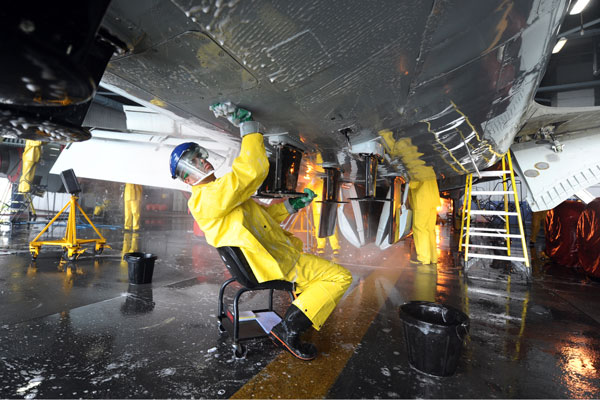Proper Sealant Application Techniques
The process of preventing corrosion caused by moisture and air begins with proper joint designs and the use of sealants that keep corrosive agents out. However, the efficacy of the sealant depends on the workmanship and the technique used when applying it. Generally, proper sealant application is the difference between quickly recurring corrosion problems and long-term protection.
'Callbacks' cost money. Re-accomplishment of sealing jobs is expensive, so these callbacks can be hard for average repair and maintenance service providers to absorb. Hence, getting the sealant application process right the first time is essential. The steps to properly apply sealants are highlighted in the succeeding sections.
Three steps for proper joint or surface preparation and sealant application

- Clean surfaces and joints — Cleaning the surface or joint serves two important purposes. First, sealants adhere best to surfaces that are clear of debris or contaminants. Secondly, during maintenance and repairs, corrosion-affected areas must first be cleaned to assess the damage or the extent to which the corrosion has affected the structure.
Cleaning solvents should be selected based on the surface material and the type of fouling it has experienced. For non-porous surfaces, solvent mixtures with isopropyl alcohol and water can be used to clean non-oily grime. More active solvents such as Xylene may be required to remove grease and other oily or sticky dirt from the affected surface. In the case of porous surfaces, utilizing water or alcohol-based cleaners can damage the material. Thus, dusting is recommended for minor messes while abrasive cleaning can remove deeper stains.
- Priming — Depending on the sealant, the next step may be to prime the surface. Although more advanced sealants no longer require surface priming to function at full capacity, it's important to understand the sealant's capabilities before deciding whether or not to do any priming.
If priming is recommended, a lint-free cloth can evenly apply the primer and reduce the likelihood of over-application. When applying primers to joints, meanwhile, a brush can help get it into hard-to-reach areas.
- Shooting — Otherwise known as the sealant application process, shooting is the stage where the sealant is placed onto surfaces or applied between and across joints. The integrity of a sealed section depends on properly coating all the necessary features. Leaving some sections uncovered and failing to fill joints to the proper depth inevitably results in callbacks. To obtain full adhesion and an effective long-term seal, the following sealant application steps apply:
- To achieve an aesthetically pleasing finish, masking tape can be used so that excess sealant does not spread to adjacent areas or sections. Masking tape also keeps the work looking professional and simplifies cleanup.
- Use the sealant manufacturer's recommended application tool. The proper tools will ensure the sealant is continuously and uniformly applied across surfaces and within joints. For two-part sealants, they ensure proper mixing.
- Once applied, thixotropic sealants should be tooled, meaning light pressure should be applied before it has the chance to cure. Tooling ensures the sealant conforms properly to the surface's shape. The tooling aid must meet the sealant manufacturer's recommendations — it may not be effective otherwise. Some water or alcohol-based tooling aids may cause adverse effects and interfere with the sealant's ability to adhere to surfaces. Tooling provides a fine finish and makes the sealing job more aesthetically pleasing.
- Finally, ensure the applied sealant meets the manufacturer's depth and surface recommendations.
Choosing the right sealant
Selecting the correct sealant is instrumental to preventing corrosion. Generally, the nature of the project dictates the specific sealant options. Other important considerations include the curing system or time, sealant durability, and the effect of UV-light on the sealant. To learn more about choosing the right sealant for specific aviation repairs and maintenance tasks, contact a
Av-DEC representative
today.
